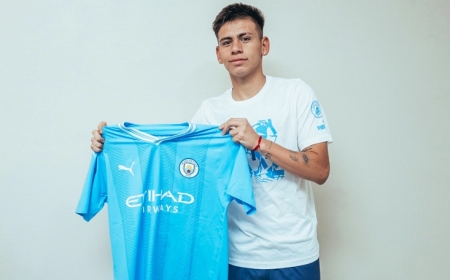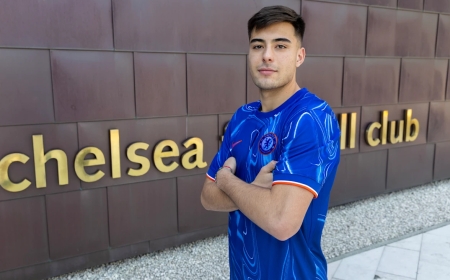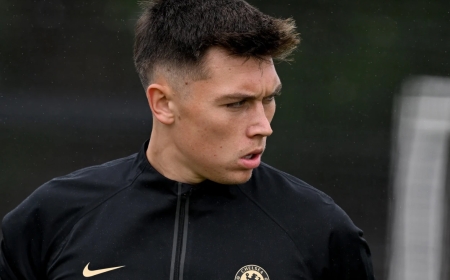Arsenal v Everton: Battle of the set-piece kings
1.
Opta Analyst's Ryan Benson examines how valuable dead-ball situations are to Arsenal and Everton
As Arsenal prepare to meet Everton, Ryan Benson of Opta Analyst assesses why set-pieces are so important to both clubs.
Set-pieces never went away, but it’s fair to say they’ve come under the spotlight a little more in the past year or so.
We find ourselves in an era of football where some will argue teams are more homogenous than ever. While that’s obviously difficult to prove in a quantifiable way, there’s also a sense the difference in quality between most teams in the Premier League is tighter than it’s been in a long time.
Saturday 14 December
Emirates Stadium, London
Arsenal
0
-
0
Everton
Highlights Available
For instance, the points difference between fifth and 14th after 15 matches played is just seven. It’s not been lower at this stage of the season since 2010/11, when it was six points, and it had only ever been tighter than that in 2002/03 and 2003/04, five points on both occasions.
With that in mind, then, plus the fact there’s more money in football than ever before, it’s no wonder that marginal gains might be sought in the shape of set-piece excellence.
Arsenal have, of course, become the team most closely associated with set-piece proficiency. Their quality at set-plays, especially corners, is no longer a secret – in fact, it’s probably become common knowledge for the average football fan, so effective have they been.
FotoJet
Last season, Mikel Arteta’s men scored 22 goals from set-pieces, a total only seven teams in Premier League history have ever bettered over a single campaign. Meanwhile, their 16 goals from corners equalled the record set by West Brom in 2016/17.
Their set-up at corners has been well documented, but among the key components are crowding at the back post and utilising blockers in order to isolate Gabriel, who’s proven himself to be absolutely lethal in the air. Granted, the impeccable deliveries of Bukayo Saka and Declan Rice are similarly vital.
arsenal-corner-set-up-vs-west-ham-2048x1152
It’s got to the point where set-piece coaches regularly take centre stage in touchline technical areas on matchdays, trading places – or standing shoulder to shoulder – with head coaches or managers when a corner or free-kick is about to be taken.
Television cameras hone in on them as they wait expectantly, in turn helping them become recognisable. Arsenal’s Nicolas Jover even has a mural near Emirates Stadium now.
Set-piece coaches are increasingly headhunted and poached like the traditionally more influential staff members such as sporting directors, managers and assistants. Miles of column inches have been dedicated to Jover over recent seasons, while many other Premier League clubs have hired specialists.
In fact, Chelsea were rumoured to have paid Brentford – who’ve been seen as trendsetters over the eight years or so since giving Jover his big break in 2016 – £1million in the summer to bring Bernardo Cueva into a similar role at Stamford Bridge.
With set-piece efficiency so in vogue, then, we can expect the build-up to Saturday’s Premier League contest between Arsenal and Everton to be dominated by the phenomenon. There’s a reasonable chance the game might even be settled by such situations.
Arsenal FC v Southampton FC - Nicolas Jover
How Nicolas Jover made Arsenal the kings of corners
Alex Keble looks at what Mikel Arteta's specialist coach has done to turn the Gunners into the Premier League's best team from dead-balls
But what makes their duel even more intriguing when framed on set-pieces is that Everton aren’t one of the clubs who’ve hired a specialist, and yet their effectiveness with the dead-ball is considerable.
“It’s because I’m a dinosaur,” Sean Dyche joked last week when asked about Everton’s excellent record from set-plays, despite not having a specialist.
He elaborated: “No, on a serious note, the way I look at it, my staff have got goodness knows how many games (as players); I’m going to say around 1,000. I’ve got 1,000 myself in playing, development coaching, youth-team coaching, management, so if we can’t design a set-piece with a group of analysts – who can see everything that happens on a set-piece of the opposition or us – then I’ve got the wrong staff.
“So therefore, with that depth of knowledge, I’d use them. I am happy to pass it over to them. That’s not to say there’s not a reason for set-piece coaches – that’s up to managers and staff and football directors.
“Seven or eight years ago everyone was like, ‘Why are you worried about set-pieces? Get it down and play!’ Now everyone has re-realised that set-pieces matter. For a long, long time, a rough figure is that 25 per cent of goals are from set-pieces. So why wouldn’t you use them?”
Dyche is broadly correct with that estimation – the actual figure across the entire Premier League history is that 23.5 per cent of goals have been scored via set-pieces (excluding penalties), but we can forgive him for being only 1.5 percentage points out.
FotoJet
For Dyche specifically, though, the reality is actually more extreme.
Since he joined Everton in February 2023, they have scored 31 Premier League goals from set-pieces (excluding pens). With the Toffees netting 73 times in total over that period, it means 42.5 per cent of their goals under Dyche have been scored via set-pieces.
Among teams to have scored 10+ times under a specific manager in that same timeframe, no other side have netted more than 31 per cent of their goals from set-pieces – second to Dyche and Everton are Rob Edwards and Luton Town (30.8 per cent), followed by Julen Lopetegui and West Ham (30.0 per cent).
EVERY Arsenal corner goal from the last two seasons
The Gunners have scored an astonishing 23 goals from corners since the start of the 2023/24 season. Watch them all here
So, while set-pieces are deemed a crucial part of the Gunners’ artillery, there’s an argument they’re even more integral to Everton.
Looking at this season alone, Everton’s eight Premier League goals from set-pieces is bettered only by Arsenal, Wolfsburg and Stuttgart (all nine) among teams across the top five European leagues.
However, there is a fairly significant caveat to their record. Four of their set-piece goals came in one game, last week’s 4-0 win over Wolves. Two were Craig Dawson own goals; the others came via a direct free-kick by Ashley Young and then an Orel Mangala strike from the edge of the box after Wolves only half-cleared the danger.
While none of that completely negates their output, we have to bear in mind that there was more than a hint of good fortune at play. Nevertheless, Dwight McNeil does deserve praise for the wicked deliveries he put in for Dawson’s unfortunate brace.
FotoJet (2)
McNeil is certainly a part of the threat Everton can pose at set-plays – his 13 chances created from dead-ball situations is bettered by only four players in the league this season, and if you include own goals, his deliveries have led to a joint-league high of four goals.
McNeil’s inswinging corners from the right have been far more productive than any other type of corner delivery for Everton this season - however, including own goals, their corners have actually only yielded two goals in the passage of play following the delivery.
FotoJet
Similarly, their 1.8 Expected Goals (xG) from corner situations is the second-lowest in the Premier League – just for context, Arsenal’s 7.9 is 2.9 more than any other club in the division.
The majority of Everton’s set-piece goals (six) and threat has come via free-kicks instead.
FotoJet (2)
A tactic they rely on (for corners as well) is looping the ball towards the back post, where James Tarkowski looks to isolate his marker.
FotoJet (2)
While Tarkowski is presented with the odd shooting opportunity, he often looks to nod the ball back across goal. So even if this ploy doesn’t lead directly to shots - that would boost Everton’s xG - Tarkowski’s presence undoubtedly causes problems.
It’s understandable that this tactic works better for them at free-kicks than corners. With the former, there’s usually more space initially in the area to exploit. So, although he is still a nuisance in both situations, deep free-kicks provide more danger.
The following two examples occurred against Brighton and Man Utd, and the next two occurred in the same game against Southampton.
PreviousNext
Tarkowski finds space in the Man Utd penalty area
1 / 4
In each of those examples, Tarkowski got the first contact on the delivery. In fact, he’s had the first contact on 25 per cent of Everton’s free-kicks, the second-biggest proportion of all players in the Premier League relative to their team.
That goes up to 34.5 per cent at corners, the greatest proportion in the division. In that case, it won’t come as much of a surprise to learn his 30 touches in the opposition’s box is the second-most among nominal centre-backs.
FotoJet
Among players to have engaged in at least 20 aerial duels in the Premier League this season, only two players can better Tarkowski’s 74.1 per cent success rate, hence why he’s such a useful weapon.
With Everton struggling to score goals in open play, underperforming their open-play xG (-4.4) by the third-worst rate in the Premier League ahead of the postponed Merseyside derby last weekend, it’s understandable that they’ve started to be accused of being overly reliant on set-pieces. After all, 57.1 per cent of their league goals this season have been scored from such situations – that’s comfortably the highest in the division.
Similar criticisms have, fairly or not, been levelled at Arsenal.
With nine of their 29 Premier League goals in 2024/25 coming via set-pieces, they’re not quite at the same level of dependency as Everton, but 31 per cent is still the fourth-highest in the top flight.
Further to that, their 8.8 xG from set-pieces equates to 33.7 per cent of their overall xG, which is the greatest proportion of all Premier League teams this season.
An issue that some have diagnosed with Arsenal in recent weeks is a perceived lack of creativity in open play. In fact, for the whole season, their 15.9 xG from open play is only the 12th-most in the Premier League. On the face of it, that might sound pretty poor for a team aiming to challenge for – and potentially win – the title.
FotoJet (2)
After all, the vast majority (3.1) of their total xG (4.1) from recent games against Manchester United and Fulham came via set-pieces.
But is it really even a problem? Arteta certainly doesn’t think so.
“I don’t worry because when I watched the (Fulham) game again, the situations we had in open play, what the opposition created in open play, I don’t know if we can do much more than that, especially when I watch Fulham and every opposition they have played,” he said earlier this week. “And also because set-pieces are a consequence of what we do in open play and how we do defensively. And it’s a phase that is part of you.”
He then proceeded to pick up two water bottles while further explaining his point, adding: “You guys see it that, this [the first bottle] is set-pieces and this [the second bottle] is open play. I see it like [the first bottle] is open play and set-pieces. It’s all together with every style of play.”
FotoJet (2)
It’s also worth considering game state when taking open-play xG into account. For instance, five of Arsenal’s nine Premier League set-piece goals this season have put them into the lead (six if you include the stoppage-time winner v Leicester), meaning they’re not going to be as inclined to push forward in search of additional goals once their corners have done the damage.
Much of that damage has, of course, been caused by Gabriel off the deliveries of Saka and Rice, as we explored recently. However, the Brazilian is an injury doubt for the weekend after missing Wednesday’s UEFA Champions League win over Monaco, meaning Everton may just have the advantage in the box.
Nevertheless, with the quality of players at Arteta’s disposal, Arsenal’s open-play woes may have been slightly blown out of proportion – they didn’t have too much trouble against Monaco, for example.
Everton can’t really call upon players like Martin Odegaard and Saka, however, and so it stands to reason that set-pieces might be more valuable to them.
The Toffees clearly don’t carry quite the same threat from corners as Arsenal do. But it’s no coincidence that they’ve scored so many goals from set-plays over the past 20 months, and Tarkowski demonstrably causes havoc with his height and general aggression.
McNeil’s deliveries are also a dependable weapon, and although they’ve been helped by own goals, that’s still testament to the panic he’s helped cause.
Set-piece goals are technically on the decline year on year in the Premier League, but Arsenal and Everton are equipped to provide an exhibition in their worth.
Visit Opta Analyst for more features on the Premier League
What's Your Reaction?








































